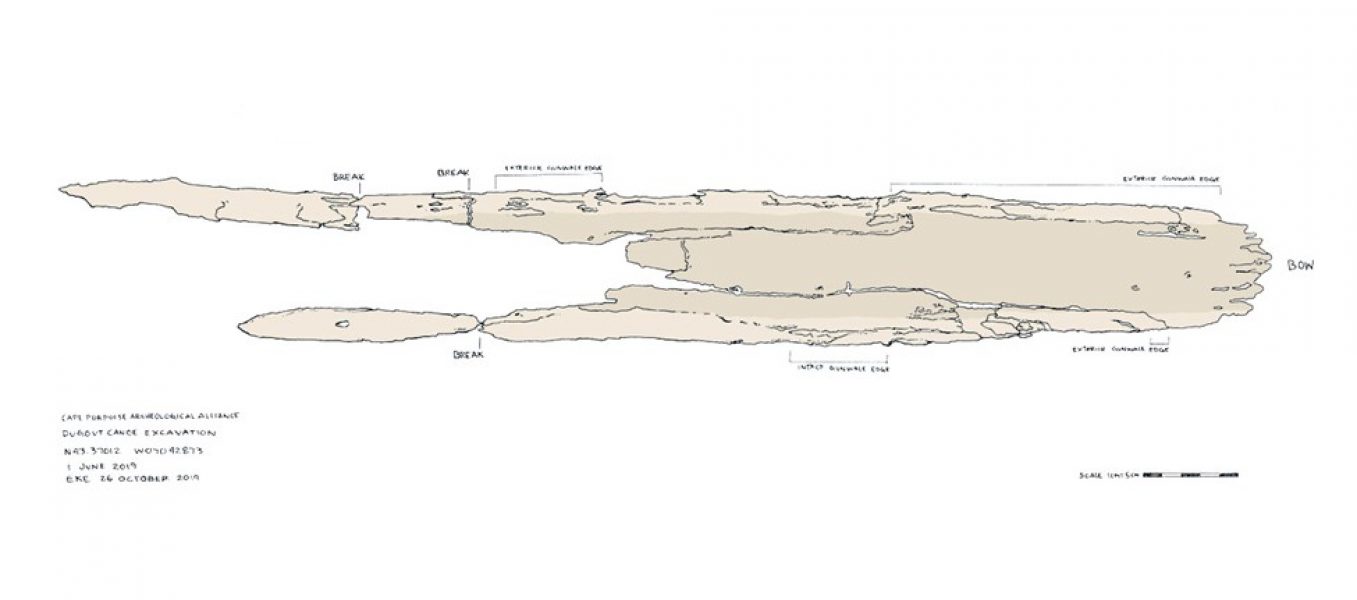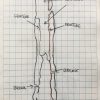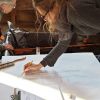
Art & Archaeology
Artists work in archaeology to produce precise images of artifacts and features.

Artists, sometimes referred to as Artists in the Service of Science, work throughout the world documenting things like Egyptian wall paintings and here in Cape Porpoise, a 700 year old dugout canoe made by Indigenous people. Artists record these objects for academic context and future interpretation.
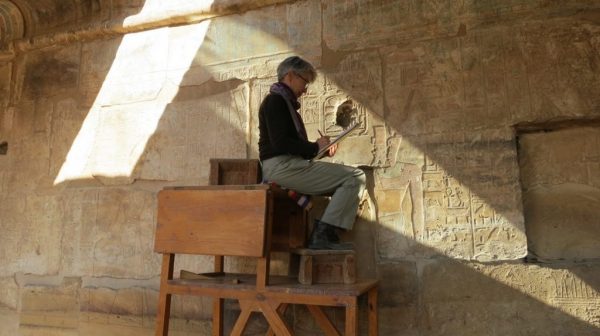

Artists have recorded archaeological artifacts and features for many centuries. This sketch published in 1483-4 by German artist Bernard Von Breydenbach (1440-1497), recorded the Holy Sepulchre in Jerusalem. The sketch was later revered as one of the first archaeological illustrations.
As compared to the photograph depicting the building today, this drawing is a reference revealing how the building has changed over 500 years.

Today, archaeological drawing is used to record the details of artifacts, features and excavations that photography alone cannot accurately document.

American archaeologist and Egyptologist James Henry Breasted argued that photography alone would not provide the detail necessary for study and academic interpretation. Measured drawings were more accurate than photography insisting “that facts must be systematically collected and published in accessible and reliable form” and that “the camera, with its single eye, can never be quite free from distortion”. This image shows the real artifact next to a painting of the artifact by Charles Clark Willoughby. Willoughby was a Maine artist and archaeologist who later became the Director of the Peabody Museum of Archaeology and Ethnology at Harvard University.
In 2019, Archaeologists of the Cape Porpoise Archaeological Alliance recovered the remains of a 700-year-old dugout canoe buried in the intertidal mudflats of Cape Porpoise, Maine. Archaeologists noticed that the wood was “punky” meaning it had a soft spongy texture. The canoe was very fragile. Concerned that the canoe would not survive the conservation process, artists completed accurate drawings of the canoe as it was found. The initial drawing established overall measurements. Subsequent versions recorded additional details.
Archaeological drawings are also used to increase our understanding of how artifacts were used in a specific landscape. This drawing was completed as an inquiry into what it might have felt like to experience the landscape in the Cape Porpoise archipelago many hundreds of years ago. Interpretive drawings such as this help us to zoom out from the intensive study of artifacts to expand our sense of the setting in which the objects were used by those who worked and lived in these lands in the past.
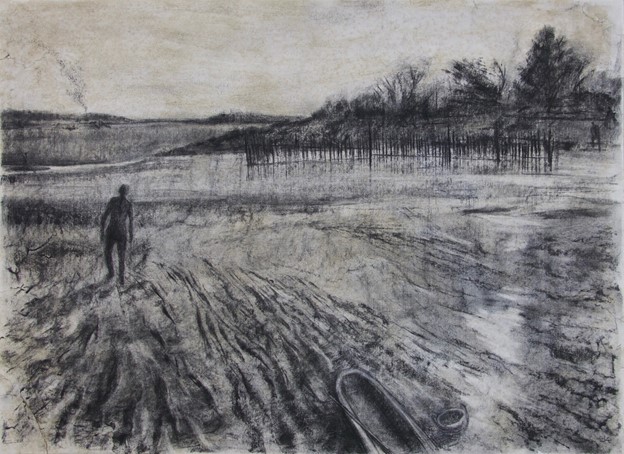
Many times, archaeological drawings begin in field note books. Some are quick sketches while others are more technical.
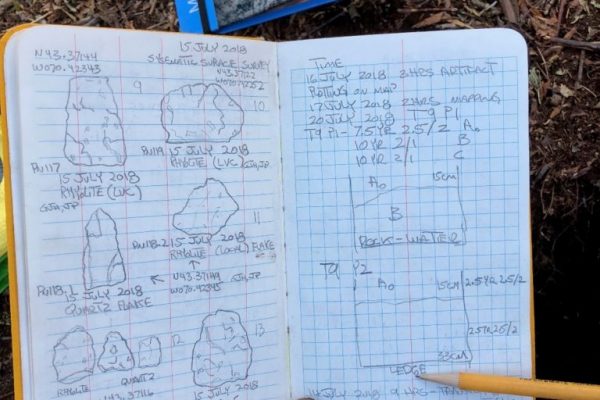
The photograph above shows quick sketches of stone artifacts on the left and test pit profiles on the right.
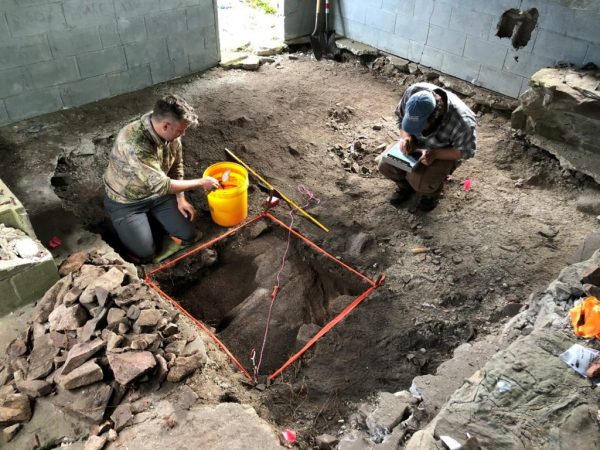
In the photograph above, an archaeologist draws an excavation unit. Using a system of conventional lines and markings, the archaeologist produces a technical drawing that can be understood by other archaeologists.

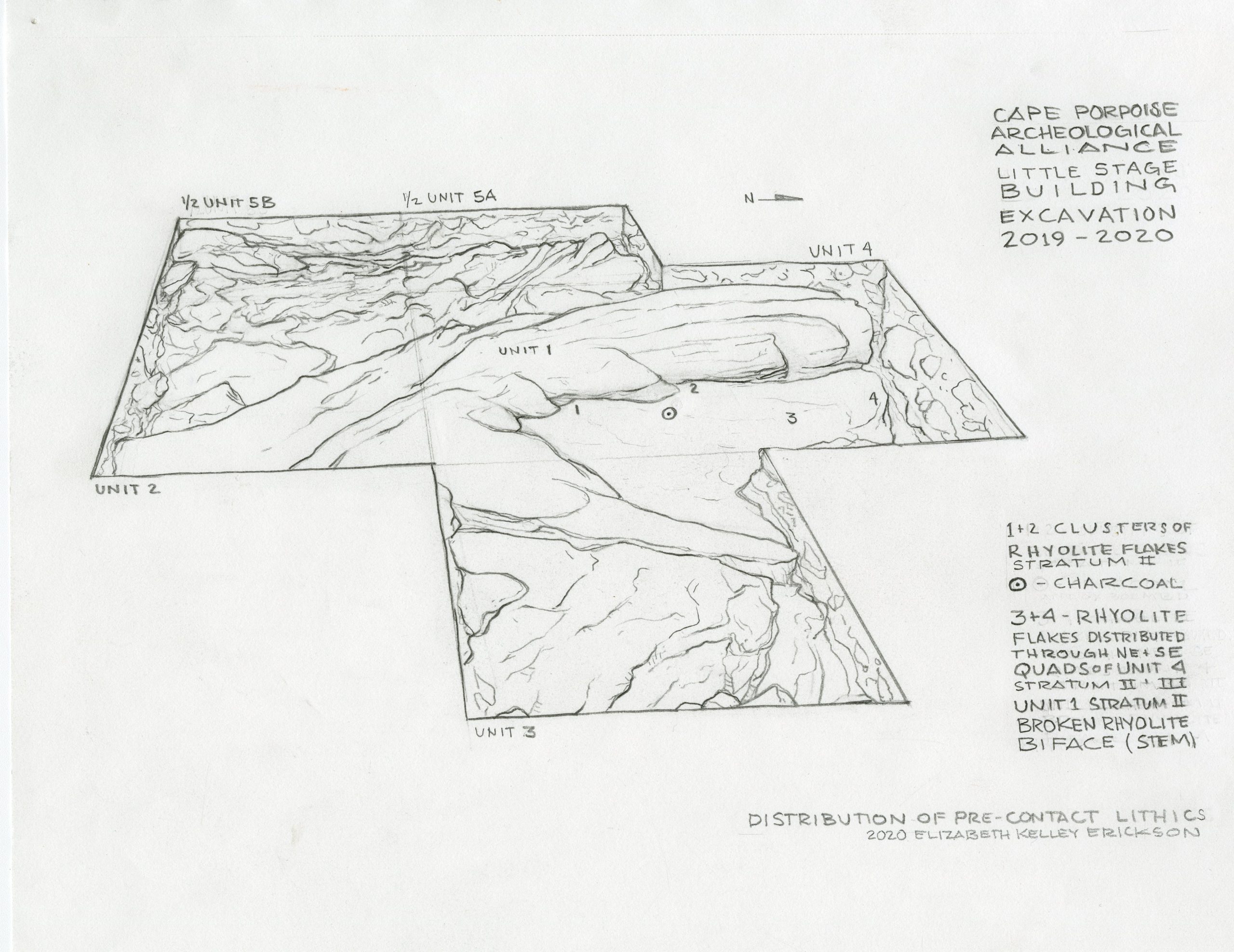
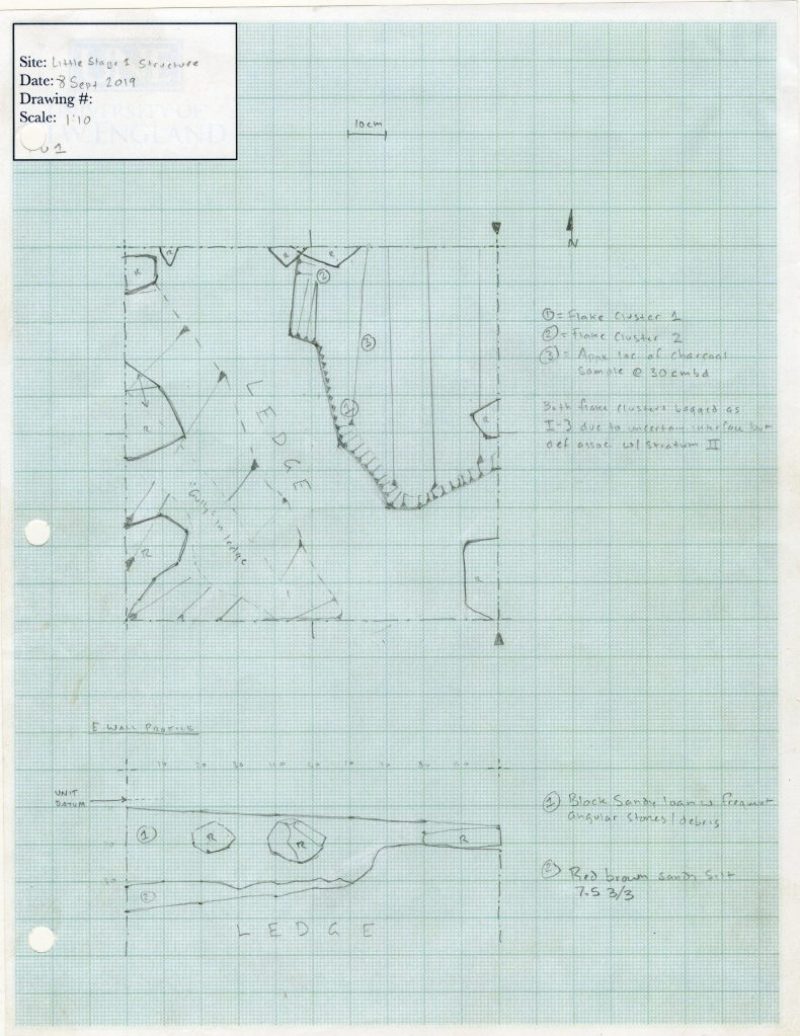
Drawings in field notebooks, excavation forms and test pits forms are used to document information in the field. That information is then taken back to the archaeology laboratory for further analysis.
For artifacts, the process of drawing requires deep observation resulting in understanding how the object was made. When drawing stone tools such as the spear point pictured below, the artist can interpret the order in which the flakes were removed.





